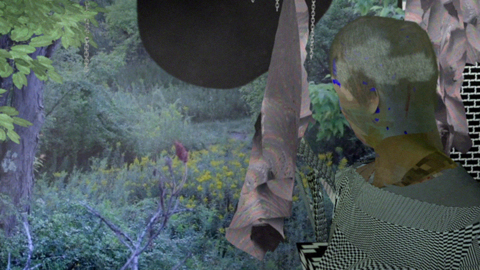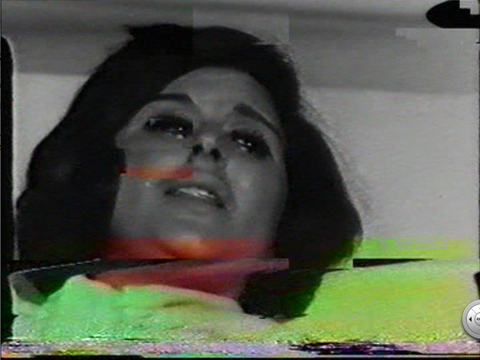DIM SUGGESTS: Special Effect Nov 6 + Experiments in Arab Cinema Nov 15/16
Hi DIM supporters. We don't usually promote non-DIM sponsored events, but there are two upcoming events by artists and curators who have presented with DIM in the past. Both will be great events.

SPECIAL EFFECT
LIVE CINEMA BY PETER BURR
Wednesday, November 6, 2013
7:30pm Doors. 8:00pm Show
Cineworks: Howe St. Studio (1131 Howe St, back lane entrance)
Pay What You Can, suggested $10 donation.
Cineworks Website
Special Effect Website
Video and performance artist Peter Burr presents Special Effect, a live television show inspired by Andrei Tarkovsky's 1971 film Stalker. The performance features screenings of 18 short animations from underground video label Cartune Xprez, original music from Lucky Dragons and Seabat, and live performances by Burr involving laser beams, green screens, and a webcam. Featuring original music by Lucky Dragons and Seabat.
The animations in the show, all of which are 30-second works commissioned by Cartune Xprez, were made by underground animators from across the globe (see below for contributors) and will be presented by Burr as the live host of an imagined television show. The videos as well as Burr’s performance were inspired by "The Zone," an off-limits place of hope and possibility rumored to make one's deepest desires come true that is the central setting in Tarkovsky’s film. Burr has toured the show across Australia and Europe throughout 2012/2013 and is touring it across the United States this fall.
Contributors include James Duesing, Amy Lockhart, Yoshi Sodeoka, Billy Grant, Michael Bell-Smith, Ola Vasiljeva, Jacob Ciocci, Andrew Benson, Jeff Kriksciun, Chad VanGaalen, Philippe Blanchard, E*Rock, Luke Painter, Brandon Blommaert, Stu Hughes, Devin Flynn, Michael Robinson, Sabrina Ratté, and Brenna Murphy. Written by Peter Burr, Maya Lubinsky, and PFFR. Costumes by Diana Joy. Computer programming by Mike Heavers.
Peter Burr
Somewhere in the murky recesses of childhood memories—of Sunday-morning television, mounds of improbably coloured junk food, and inane addictive jingles—lurks Peter Burr, a tech-gnostic agent. His mission: to subjugate the innerspace, chock open the escape hatch, and enable the immoderate two-way flow of synthesised realities. Burr’s green-screen dream is yours too. A television is broadcasting from within you as you watch it; a boiling, aberrant, hysterical fusion of mind and matter, technology and cultural form. Confronting the malaise of too much television, Burr’s diagnosis is also his prescription: more of the same!
-----

Experiments in Arab Cinema
curated by Laura U. Marks
November 15-16, 2013
SFU Woodward's Goldcorp Center for the Arts, 149 W. Hastings St., Vancouver
$15 for series pass; for SFU students, $5 per screening
Event page
Facebook page
Across the Arab world, independent artistic creation has bloomed in recent years, revealing a brilliant and subversive underside to stereotypes about the region. These works experiment with storytelling, manual and digital animation, mining archives of cinematic and television, and expanding the expressive capacities of film and video. They refuse demands to explain and "represent," instead supplying vivid images, strong sensations, and pungent narrative twists. Celebrated internationally but still difficult to access, these works come to Vancouver through SFU prof Laura Marks' extensive research in the region.
November 15 8 p.m.
The Glitch Program
Digital glitch shows the physical nature of digital media, which, in many Arab countries, refers to problems with bandwidth, power cuts, and pirated media. Glitch shows you can't count on the image, in Gheith Al-Amine's powerful meditation on images of women and women's self-image, Once Upon a Sidewalk. Glitch protests corporate ownership of code, in works like Ahmed Elshaer's Recycle the Code. Other works dig down to the algorithms underlying the image: in Al-Amine's hilarious text animation, Elshaer's machinima Home, Mohssin Harraki's virtuosic mathematical rendering, and Mounir Fatmi's tongue-in-cheek Islamic DJ booth. Finally, Ahmed Nagy's dizzying double-screen video, The Holy Zero, explains the numerical forces underlying the visible world.
November 16, 3 p.m.
Unbearable Beauty
The glitch theme also animates Rania Stefan's gorgeous and achingly sad The Three Disappearances of Souad Hosni, made entirely of VHS video clips from the great Egyptian actress's career. Three Disappearances shows how loss, forgetting, and violence attach to popular narratives of women like those Hosni portrayed throughout her career, and become encoded in the medium itself.
Preceded by Dima El-Horr's sensuous and erotic meditation on men and seawater, filmed along Beirut's Corniche.
November 16, 8 p.m.
The Body in the Archive
Like The Three Disappearances of Souad Hosni, some of these works search for latent histories in archives of cinema and late-night TV. Maha Maamoun's 2026 is a dark science-fiction fantasy inspired by Chris Marker's low-budget classic La Jetée. Raed Yassin's The New Film of 2009, composed of hundreds of Egyptian popular films, proves scarily prescient of the longevity of Egypt's military regime. Sherif El Azma's dive into the archive of 1930s Egyptian and colonial cinema results in a seductive and uncanny neo-noir drama. Others search for bodies hiding behind the screen of low-res video or text, often animated by homoerotic desire, as in Akram Zaatari's Tomorrow Everything Will Be All Right and Mahmoud Khaled's Camaraderie, while in Khaled's This Show Is My Business a male belly dancer describes his struggle to bend the gender of his chosen profession. And in the exquisitely filmed narrative Ashes, Joana Hadjithomas and Khalil Joriege treat a funeral wake as an occasion for myriad tender caresses. But the body is missing!



Add new comment